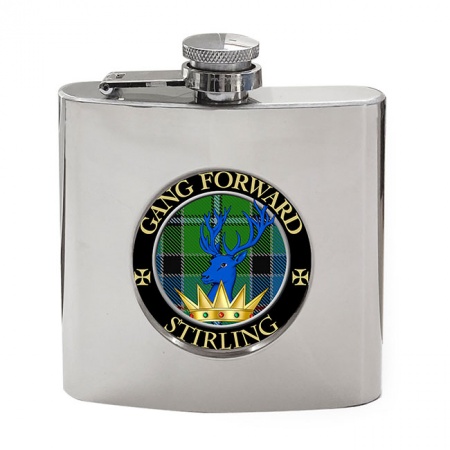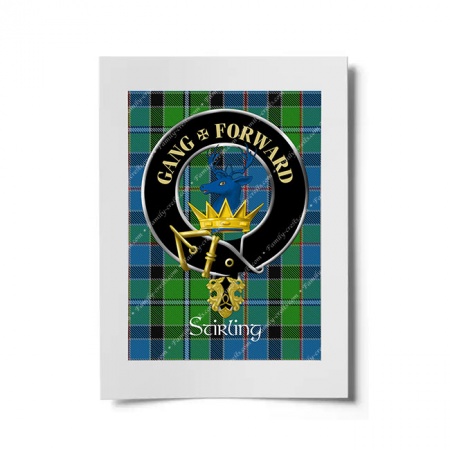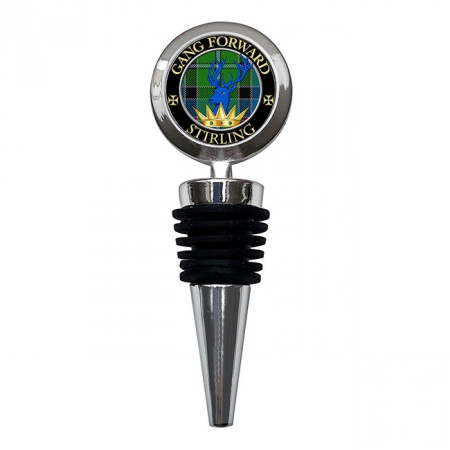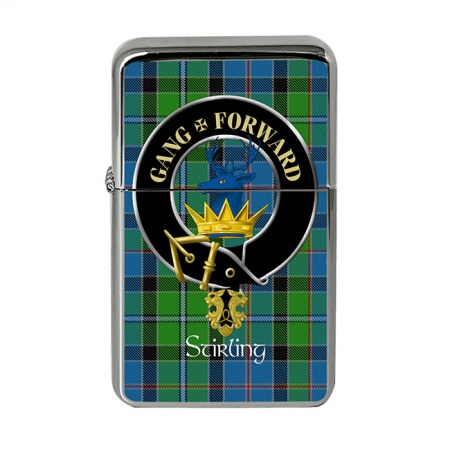Stirling
Stirling
Clan Stirling of Keir, Scotland. Descended from Thoraldus, who was granted the estate of Cadder by King David I in 1147; his descendant, Sir Alexander Strivelyn, 5th Laird of Cadder died in 1304, his son, Sir John de Strivelyn, was killed at the Battle of Halidon Hill in 1333. His descendant, Sir John de Strivelyn, 3rd Laird of Cragernard was knighted in 1430, was governor of the Dumbarton Castle and sheriff of Dunbartonshire, he was also armour bearer for King James I, and Comptroller of the Royal Household. His son William acquired the lands or Glorat from the Earl of Lennox and was also Constable of Dumbarton Castle, as was his son, George, who was killed at the Battle of Pinkie in 1547. His great-grandson, Sir Mungo Stirling of Glorat, supported the crown during the Civil War, and was knighted by Charles I. His son, Sir George Stirling, was created a Baronet of Nova Scotia in 1666 and the family arms were augmented with the royal tressure by Charles II. The Stirlings of Keir obtained their lands in circa 1440, and Sir William Stirling of Keir supported Prince James in the revolt against his father James III and was rewarded when the prince came to the throne in 1488. His descendant, Sir Archibald Stirling of Keir became Lord Garden as High Court Judge in 1660. The Stirlings of Keir supported both Jacobite Risings in 1715 and 1745. The Stirlings of Faskine in Lanarkshire are a cadet of the Stirlings of Cadder, and of this branch, John Stirling, died 1709, was Lord Provost of Glasgow and Admiral Sir Walter Stirling of Faskine was commander-in-chief of the fleet at the Nore; his grandson, Rear Admiral Sir James Stirling of Drumpellier fought in the war against America in 1812, and was later Governor of Western Australia.
Arms: Argent, on a bend sable, three buckles of the field.
Crest: Issuing out of an antique coronet or, a hart’s head couped azure.
Motto: Gang forward.
On Compartment: Castrum et nemus strivelense (The castle and wood of Stirling).
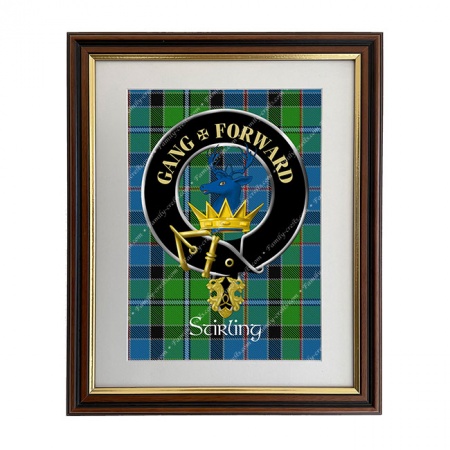
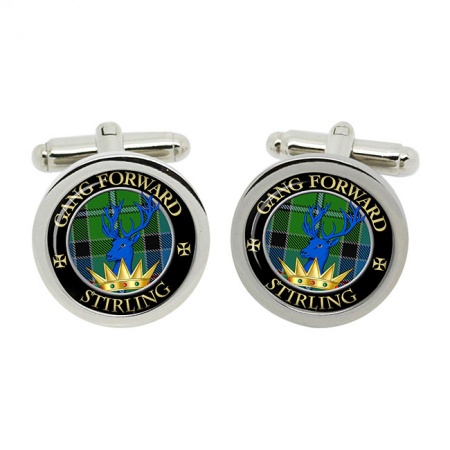
.jpg)
